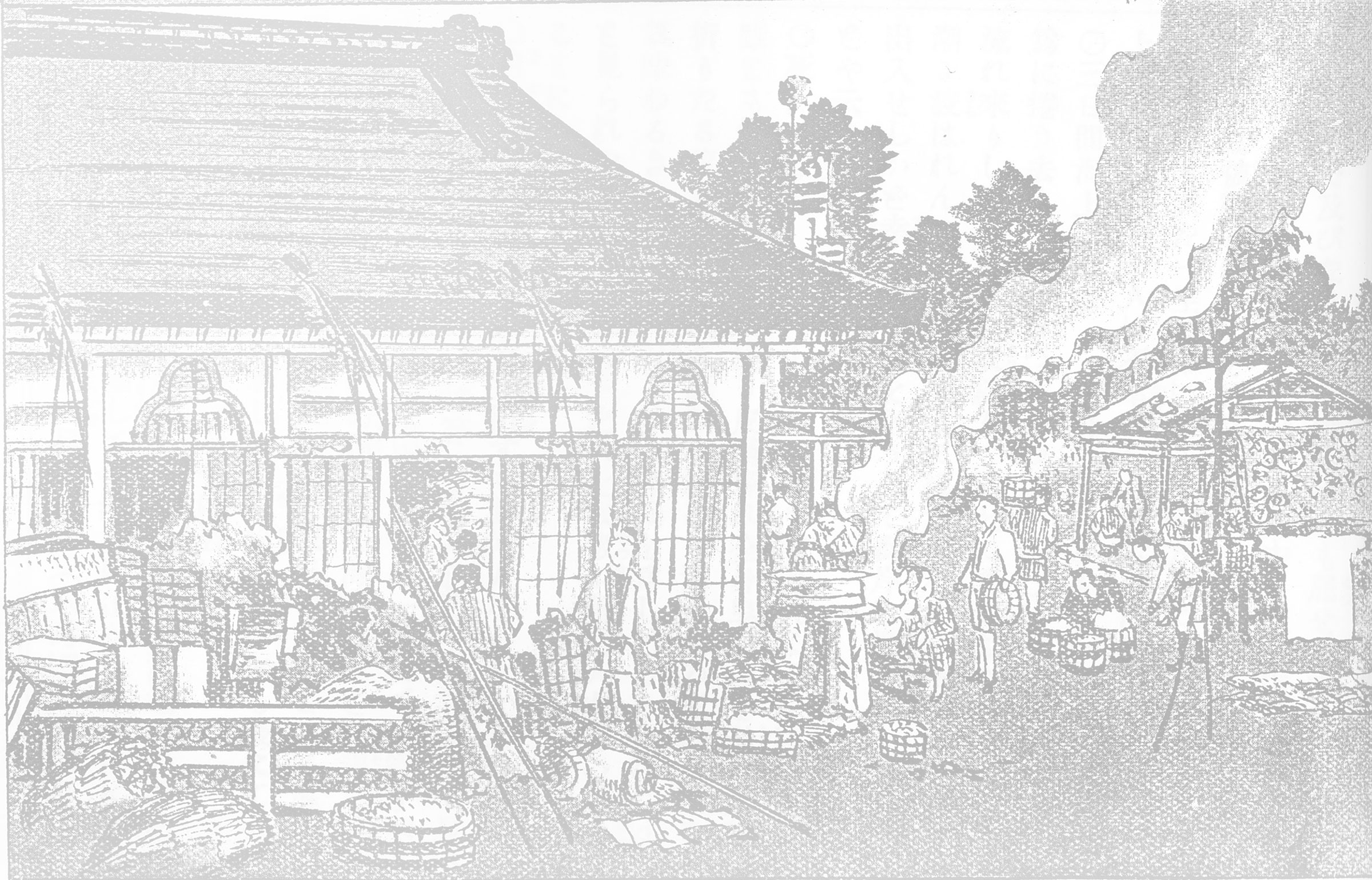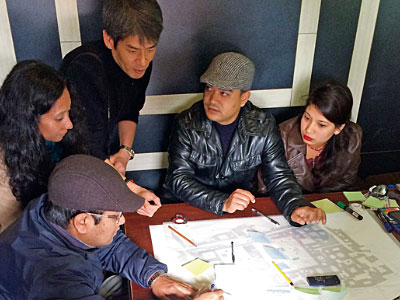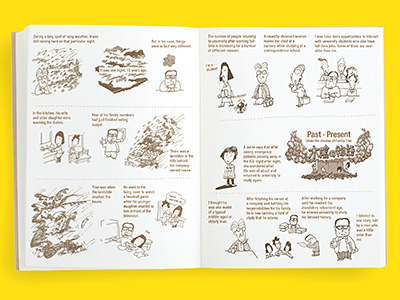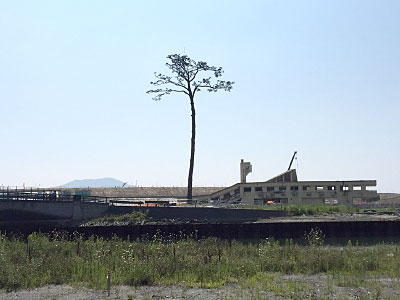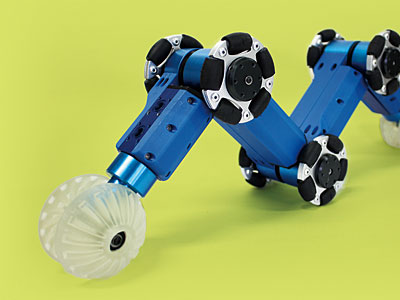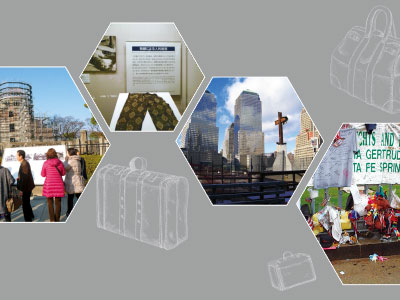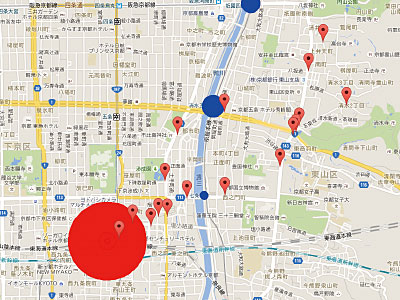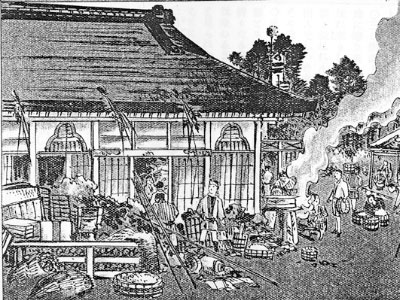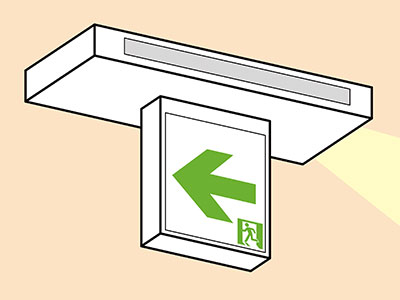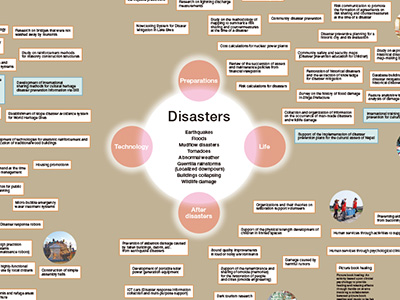STORY #7
Where are the safe places to evacuate to?
An illustration showing temples and shrines used as refuge sites, published in a magazine in the Meiji Era, Fuzoku Gaho
"Illustration of temporary refuge," Extra Issue of Fuzoku Gaho (Volume 2 of Tsunami Damage Record)
Michiko Hayashi
Assistant Professor, College of Science and Engineering
There were many temples and shrines that escaped the huge tsunami caused by the Great East Japan Earthquake and that served as refuge sites
Thousands of human lives were lost in the Great East Japan Earthquake of 2011, but most of the casualties were from the resultant tsunami. Attacked by mountains of waves as tall as buildings, people escaped to higher ground at any cost. "In that time, more than a few people took refuge in cultural assets in the community, such as temples or shrines," Michiko Hayashi says.
Only two months after the earthquake, Hayashi visited one of the affected areas, Jusanhama in Kitakami Town, Ishinomaki City, Miyagi Prefecture and investigated the temples and shrines that served as refuge sites. "I felt a strong ambivalence about conducting a survey while there still were people who were forced to evacuate the area. I was intent on doing it however, thinking that otherwise I wouldn't be able to produce lessons that could be useful later on," Hayashi says, showing her sense of mission as a researcher.
Jusanhama in Kitakami Town where Hayashi surveyed is an area prone to tsunamis. It has suffered damage three times in three different massive tsunamis, one each in 1895, 1933 and 1960. Hayashi considers, "Temples and shrines in the area have been used as refuge sites for a long time." These places are suitable for evacuees because, for religious reasons, they tend to be built on elevated ground away from residential areas. In addition, in the Sanriku region, due to the three tsunamis since the Meiji era, the temples and shrines built on flat land are considered to have been almost entirely eliminated.
Thanks to Hayashi's survey it was discovered that at the time of the Great East Japan Earthquake, out of the 16 temples and shrines scattered around Jusanhama, 11 of them were found to be located outside of areas that were inundated by the tsunami. In addition, a detailed analysis revealed that three out of the five of the damaged temples and shrines were temples, and only two shrines were damaged out of a total of 12. "It turned out that it was discovered for the first time that there are differences between temples and shrines, for example, in that shrines generally tend to be built on higher ground than temples."
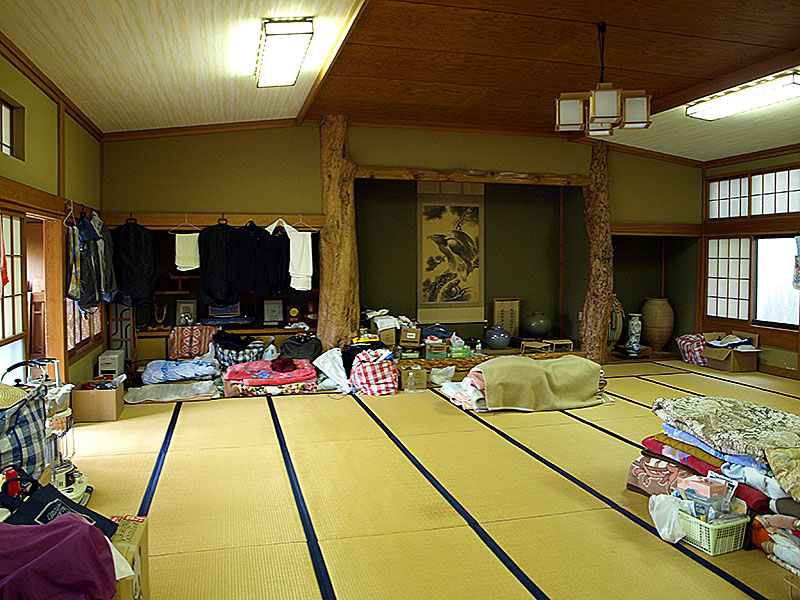
Jusanhama, Kitakami Town, Ishinomaki City, Miyagi Prefecture, only two months after the earthquake. Temples and shrines were utilized as refuge sites.
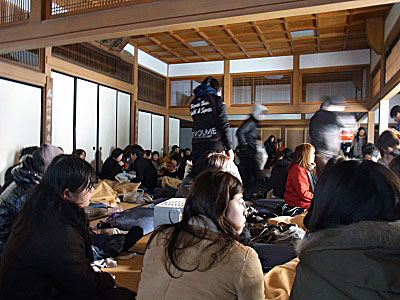
Hayashi also paid attention to the effectiveness of temples and shrines as temporary refuge sites to evacuate to immediately after a disaster, and through calculations clarified that the time for an evacuation would differ depending on whether these places were utilized as temporary refuges under attack from a tsunami or not. According to the data, "It depends on geographical conditions, but if temples and shrines are located on a ridge line, people can quickly move while they have to climb steep slopes and can expect to shorten the evacuation time involved," she says. In addition, temples and shrines tend to have main halls and other spaces to shelter people from the rain and wind, and always have many floor cushions, futons and candles, in addition to food and beverages, effective for a short stay following an evacuation.
At the same time, Hayashi continues, "There are issues in terms of operation." As a result of actually interviewing people who temporarily evacuated to temples and shrines in the affected areas, it turned out that the places that were closely related to the local community and where local residents had a stronger attachment and a sense of belonging operated smoothly when they became refuge sites. Temples and shrines that are cut off from day-to-day connections with local residents cannot be expected to build good cooperative relationships when they suddenly have to accept many people. "In particular, this is an issue that needs to be studied for temples and shrines in city areas going forward."
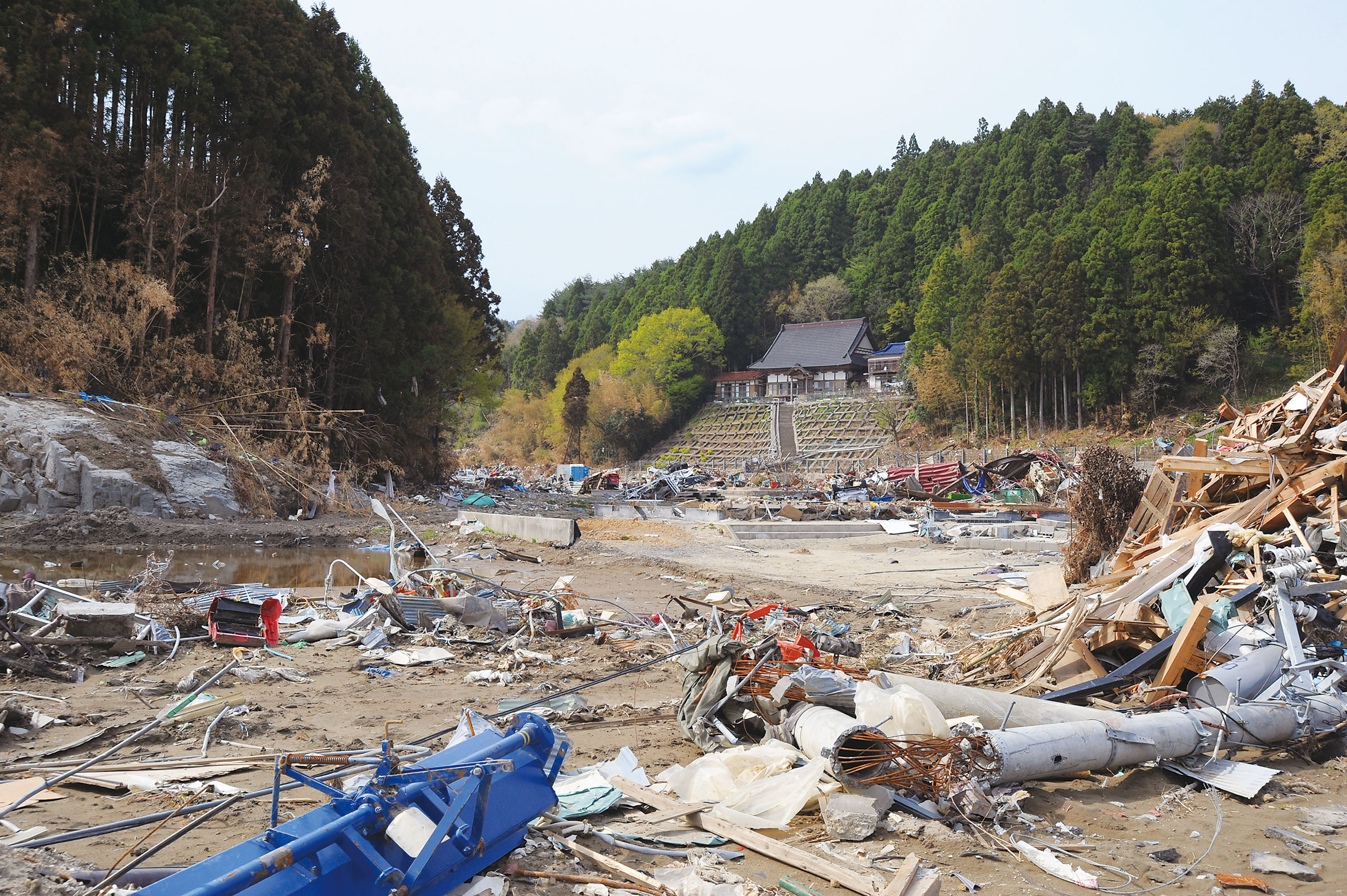
In addition to research to record the present situation immediately after an earthquake and utilize it in later years, Hayashi also tackles the challenge of learning about disasters from history based on her career studying the history of civil engineering. While much of disaster prevention research focuses on forecasting disasters in the future, Hayashi's view of studying the past is a new concept.
"In an era when infrastructure and public support were not yet established, affected people would think about ways of finding a means to protect themselves from disasters. The utilization of temples and shrines is one form of these. I believe that by reflecting on the past and acquiring a point of view not available in the present, we can offer a knowledge that can be utilized for disaster prevention going forward."
As one such activity, Hayashi examined a flood disaster that hit Shiga Prefecture in September 1896. In addition to a deluge of rainfall experienced from the beginning of the year that was greater than usual, heavy rain in September caused Lake Biwa to overflow, killing about 100 people. Hayashi carefully read newspaper articles from that time and confirmed that temples that were located on high ground and that were not affected by the flooding accepted many people and were utilized as refuge sites. Currently, she is conducting a survey of how temples and shrines were utilized at the time of the Great Kanto Earthquake of 1923.
Hayashi has also started to record the Great Hanshin/Awaji Earthquake of 1995. She has visited people who experienced the damage one by one and conducts interviews, thinking, "It is only now that we can listen to the actual experiences of the affected people."
People have been hit by numerous disasters but have overcome them and have rebuilt their towns and lives from the past until the present. Hayashi hopes to steadily grasp any lessons that can be learned and make further proposals for the future.
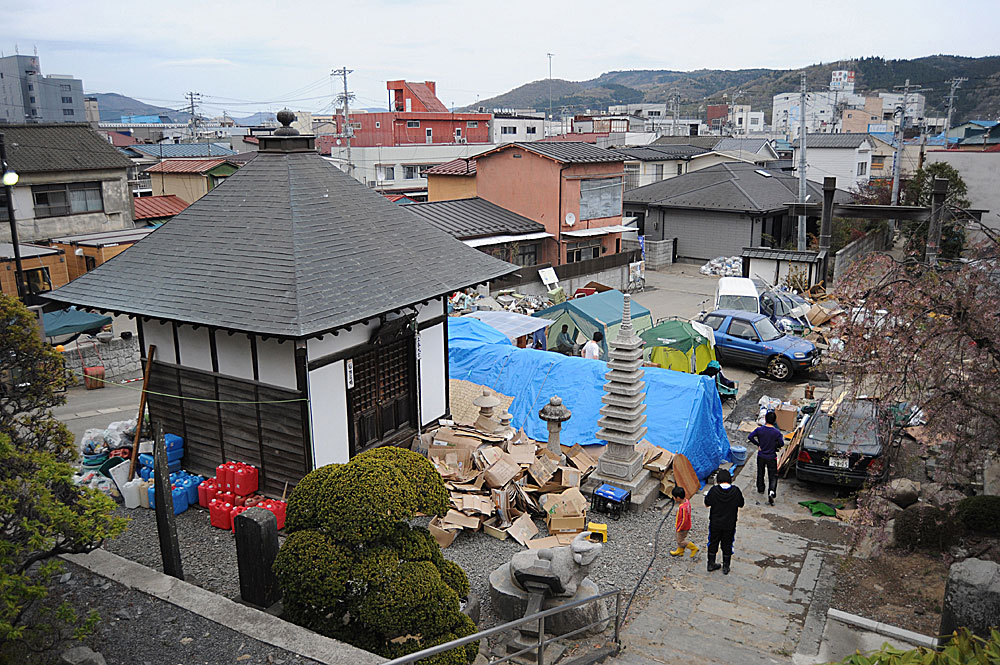
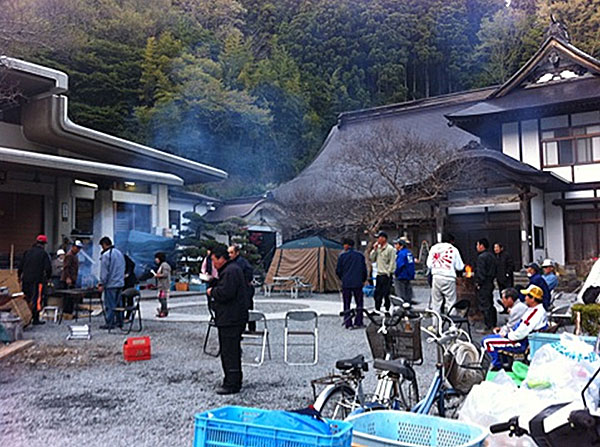
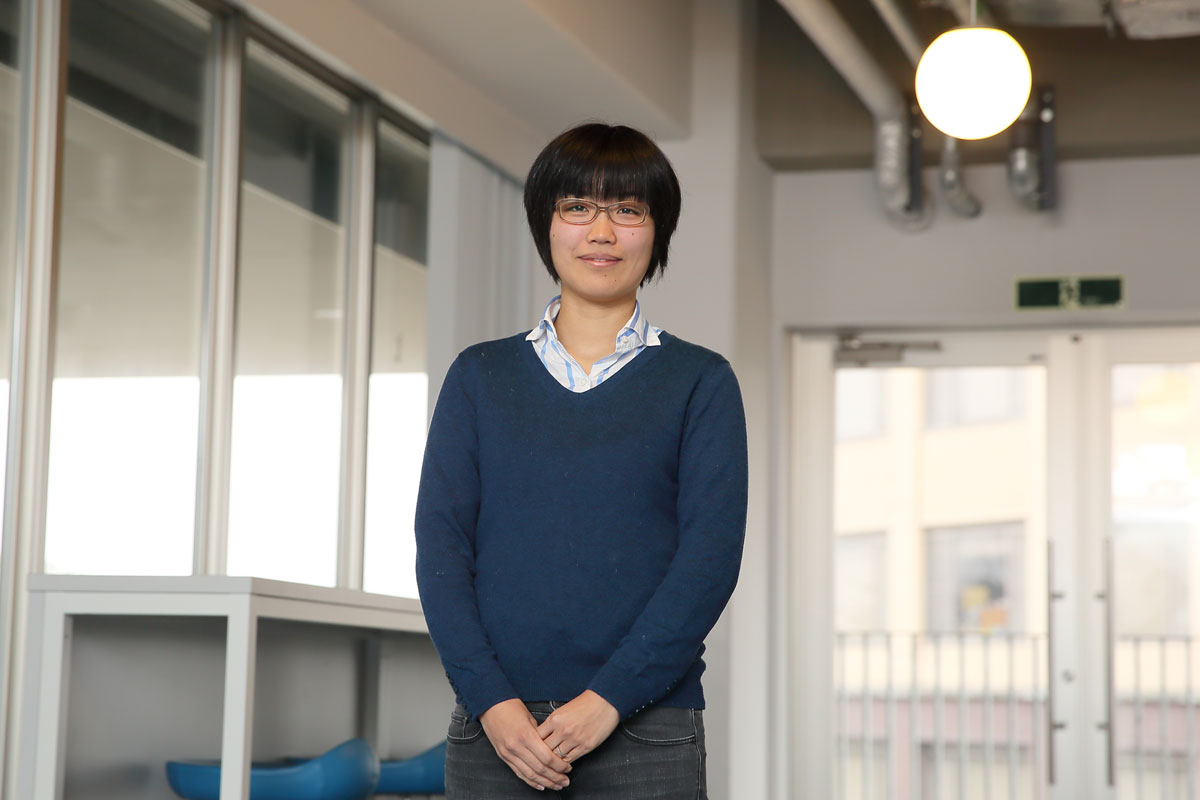
Michiko Hayashi
Assistant Professor, College of Science and Engineering
Subject of Research: Proposals for refuge sites that take advantage of community resources and culture in the case of tsunami, survey of flood damage in Shiga Prefecture
Research Keywords: Civil Engineering History, Landscape Engineering, Disaster Prevention for Historic Cities
